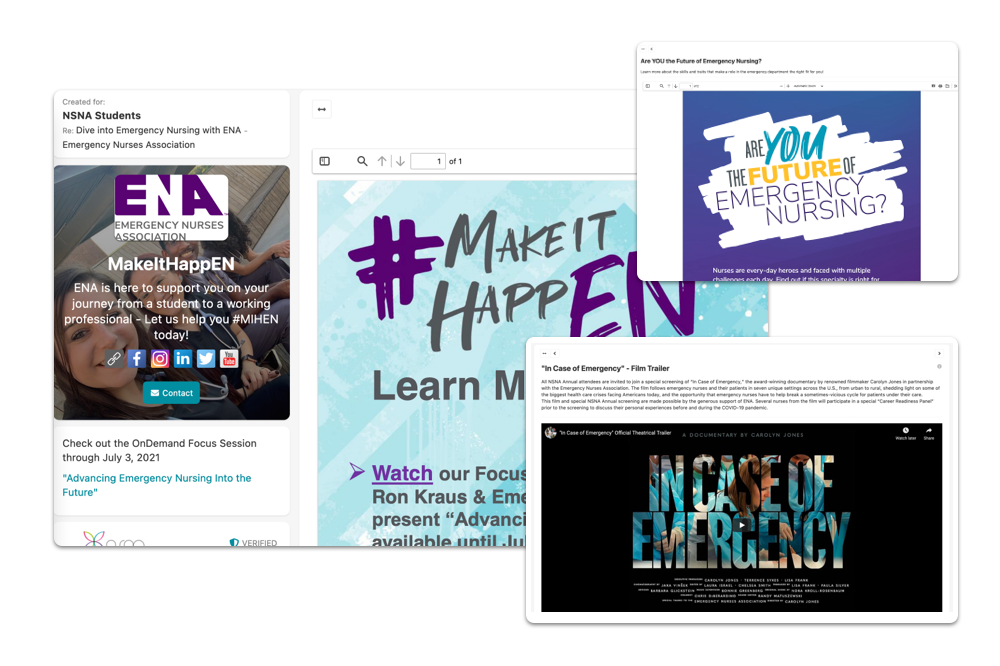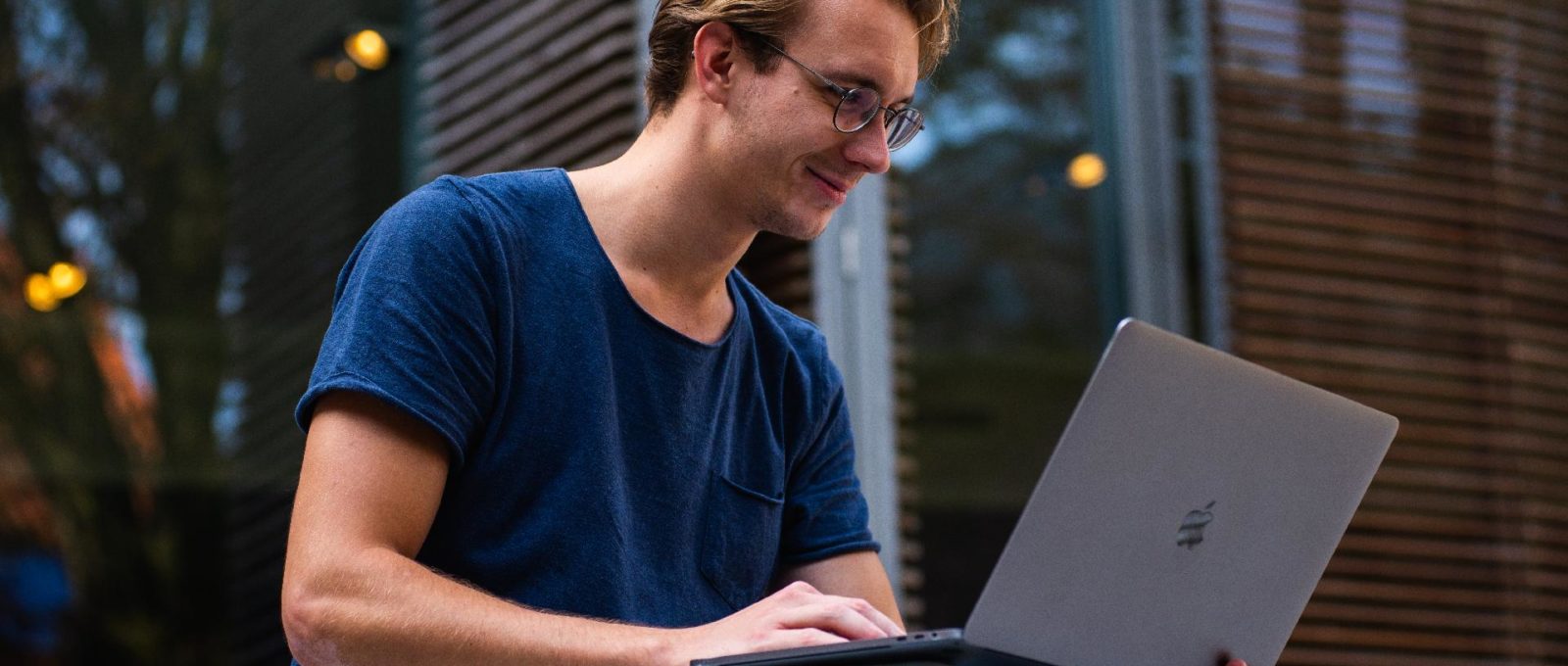Career fairs are important relationship-building events for students. For many students, it provides their first glimpse into a world beyond education and grades. For employers, it is about positioning yourself as a desired destination for the best and brightest.
Unfortunately, many career fairs have been canceled or postponed over the last year due to the pandemic. While everyone understands why, it does not take away from the fact that this means students and employers are missing out on more and more key opportunities to build career-starting relationships. What makes matters worse is that these do not need to be lost opportunities. Online career fairs are one of the most straightforward online events to coordinate. They are typically more affordable than in-person events, are better attended by students and employers, provide a measurable longer-term value, and are more flexible to fit schedules for all.
Many educators have been resistant to taking their career fairs online because they may feel intimidated by online technologies or overestimate the amount of work required. Online career fairs can be easy to execute – with most events we’ve seen being run primarily by one individual and put together in an afternoon. We typically find that as long as the event organizer is clear on five key questions, they can easily and quickly put together a compelling and engaging online career fair.
Question 1: How are employers going to Showcase themselves to students?
Career fairs are about recruitment. So it is paramount that employers feel they will showcase well in front of your student audience. Most campus recruiters are quite comfortable setting themselves up at in-person events because of years of experience – they typically have business cards, handouts, brochures, and signage ready to go.
Many campus recruiters don’t have the same comfort level with online events (although they are far more comfortable than they were a year ago). It is crucial to be able to give them clarity on how students will see them. If employers know they can leverage assets they typically already have, it can make it much easier for them to commit and engage. Most employer booths only need a few assets to decorate their booth, a brochure with an overview of the company, maybe another on its products, and if possible, a short 60-second video. Most employers can create their booth in 20-minutes. Below is an example of an employer Showcase – when employers can see the options available to them, it makes it much easier to visualize how they want to brand themselves online.

Question 2: How are we going to attract students to the event?
The biggest frustration for recruiters who attend career fairs is showing up to a career fair with few or no students. With in-person career fairs, this is less of a threat because you can place the career fair in a highly trafficked area in addition to regular marketing avenues. Unfortunately, in the online career fairs, a poorly attended event will be far more apparent, so you will need to invest more thought into how you will attract students.

For the most part, we have found that a reliable solution to poorly attended online career fairs is engaging relevant student clubs and groups to promote and market the career fair to their membership. We’ve found that these groups typically have solid marketing reach and influence.
We have also found that many schools use wordy and complicated marketing copy when trying to attract students. When marketing to students, we have found that an effective strategy is to use fewer words and more visuals. Make use of attending company logos along with simple wording like “Meet with recruiters from some of your favourite employers.”
It may also make sense to invite an influential keynote speaker you know will engage your students in some career fairs. Putting together a panel of accomplished industry professionals can also be highly engaging for students.
For some events, it may make sense to have a live-streaming feed into the front lobby with different employer presentations scheduled at different times to promote themselves and encourage students to drop in into their company web calls or group chats. This approach is similar to having a center or main stage at an in-person career fair.
Another good way to engage students is to ask employers to advertise their participation in the event on their social media channels to drive more targeted conversations or buzz for employers.
Question 3: How are employers going to engage and interact with students?
Every career event organizer needs to understand what constitutes success for their employers. Is their goal to promote their brand? Is it to get names and contact information? Are they happy with just direct online conversations with students? Do they want to collect student resumes? Maybe it is to get students to participate in a webinar or have them watch a pre-recorded video. Whatever it is, an organizer needs to understand each employer’s needs and advise them on organizing their booth and promoting themselves within the event so that their vendors succeed.
Many event organizers are used to post-event surveys to get insights on how improvements for future events. The problem with post-event surveys is they are reactive and do little to help the current event better. For this reason, we recommend a pre-event survey to understand the expectations of your employers better.
One of the key insights you should identify early is the anticipated volume of students different employers may see at any one time. Some of the more popular employers will be the primary destination for students, and these booths can be overwhelmed at different times. Such employers need to be staffed and have their booth organized for such possibilities.
At in-person events, the solution to preventing overcrowding at a particular employer booth is to give that employer a larger space to work within. This best practice translates well into the online space.
A single online booth should be viewed as a 10×10 in-person booth and is best used for single web-call links. Larger, more popular employers should have access to more space like they would in person. A larger booth (or pavilion) with subspaces housing different departments or divisions can be a powerful way to help prevent overwhelming an employer by allowing students to self-select areas of interest within that employer, which creates a real-world load balancing of the employer’s resources.
Some platforms use a queue system, but students are discouraged by this feature as they can be queued up for hours and often get frustrated and leave, especially if there is no indication of wait times. A better way of doing this is to encourage employers to use scheduling software to manage the overflow and drive students to off-peak hours for one-on-one discussions. The key is anticipating and identifying traffic flows ahead of time, which can typically be foreseen based on past experiences with in-person career fairs.
As the last point, if you will have a large career fair with more than 60 employers, you need to consider organizing the event to ensure employers located lower down in the online event can receive more equal volumes of student traffic. A challenge for all large online events is booths visible at the top or initially on entry into the event receive higher traffic than those viewed later. The event organizer can manage this by breaking the career fair hall into different rooms ( typically organized under themes of job function or company segment) or having the order of the employers listed in the event regularly resorted (i.e., alphabetically or reverse order, etc.). The more you can drive students traffic in a load-leveling strategy, the better for the students and the employers. Make sure your career fair platform offers such options.
Question 4: How do we help our students leave a lasting impression on employers?
Are your students prepared for an online career fair? Do they know how to engage with employers via online communication technologies like Zoom or Microsoft Teams? A critical nuance in putting together an effective and memorable career fair is to help both students and employers shine. Most campus recruiters have years of experience recruiting students. They are used to selling the company and the perks of working there.
Students, on the other hand, are typically much greener. While they’ll enter a Zoom call, they may be camera shy or only listen to others talking rather than engaging with employers. For this reason, you have an opportunity as a part of your career fair (or leading up to it) to provide students with the resources they need to show employers they have potential.
We recommend organizing a live session for students explaining best practices on approaching employers at career fairs and how to get the most out of the event. Many students are shy or unsure of how to start a conversation with a recruiter cold. So mentoring them in a session the hour before the event opens is a great way to attract students to the beginning of the event and get them acclimatized to the online venue experience.
In these sessions, it is essential to be direct with students, give them insight into how employers see them, and show students how to make a better first impression. Preparing students may include workshops to help students brush up on their resumes, but I’d recommend taking it a step further. Help students reflect inwards to find their natural curiosity. What kind of companies match nicely with my skills and personality? How do I learn more about companies and do research? What kind of questions should I be asking?
Next, you’ll want to consider how employers will see your students online. At in-person events, career centers usually advise students to bring copies of their resumes or business cards. There is a lot more ambiguity online – some students may share their websites, others may share their LinkedIn profiles. The issue that arises based on employer feedback is that seeing students in various formats and layouts can make reviewing them difficult. To help make students more engaging, you’ll want to have a consistent and predictable way for students to showcase themselves to employers. For example, career fairs hosted on Acadiate can have the option to use a Talent Zone. In a Talent Zone, students can quickly and privately put together a Showcase Bio (a simple student bio) or a regular Showcase (a resume and other relevant assets). These Showcases can be grouped and made available exclusively to career fair employers to review on-demand.

Question 5: How long should our online career fair be?
There is a tendency to transition many of the attributes of in-person career fairs to the online space. Timing is one of those elements you want to think about carefully.
At an in-person career fair, recruiters typically have to spend time driving to the venue site, setting up a booth, tearing the booth down, and driving back home to the office. The amount of time and effort that goes into the setup of in-person events tends to increase as the time length of the event exponentially expands for the career fair. A 2-hour event is less taxing and often needs less staff than an 8-hour event. If recruiters are at the event for 5-8 hours, you also have to add time for lunch and breaks. They may need to stay in a hotel and incur the added stress of being away from their homes and offices.
Online events tend to be far more efficient – employers set up their booths weeks in advance. They can show up remotely from their office or home and leave instantly at the end of the event freeing their time to move on to other work.
Live online communication can also be far more exhausting (also referred to as Zoom Fatigue, learn more about that here) than in-person interactions. Based on employer feedback, 5+ hours in a Zoom room is exhausting, and many wish that events were shorter or broken up into smaller events scattered over a few weeks. You’ll want to consider this as you plan your event, which is why we provide events with 90-day windows. We would recommend structuring your career fair so that no individual recruiter spends more than two consecutive hours on a web call without at least a 1-hour break, and try to limit the total web call time to 3 hours in a day.
This recommendation may not apply to larger employers with the personnel to share the career fair responsibilities across a larger team.
As we mentioned before, encourage scheduling software integrated into an employer’s booth (any embeddable software is compatible with our platform, such as Team Scheduler, Calendly, Doodle, etc.). Scheduling software helps recruitment teams and students organize short one-on-one conversations during and outside of the career fair hours. The beauty of online career fairs is that you can deliver a level of value and convenience to employers and students that would be impossible at in-person events.
These subtle, more powerful features and conveniences separate online and in-person events and reinforce the added benefits of online career fairs that are very difficult to deliver for in-person events. Conversely, there are also many benefits of in-person events that are difficult for online events to match—for example, far better face-to-face interaction or the generation of more spontaneous conversations. As career centers run more online career fairs, they can better understand the pros and cons of both approaches and are now increasingly moving towards hybrid (or blended) events to get the best of both worlds.
In closing
If you don’t initially have all the answers to these questions, that’s okay. Start with one or two because getting answers to some of these questions can help you better answer others. For example, if you have a strong understanding of what employers want out of the career fair, it is much easier to prepare students to ensure employers achieve their desired outcomes. Or, if you have a firm idea of how employers will be Showcasing themselves, you can help students better engage with their content or use that to more effectively market the career fair to students.
Online career fairs can be a fantastic alternative to in-person career fairs. They can provide students and employers with unique and exciting ways to connect and engage with each other like never before. While you will need to answer many more questions to run your event, our experience with organizers has shown us that those who put thought into these areas are most likely to run career fairs that drive massive value for all parties involved.
If you are interested in learning more about online career fairs or want to discuss ways Acadiate can help support a future online career fair at your school, don’t hesitate to reach out to us at [email protected].





